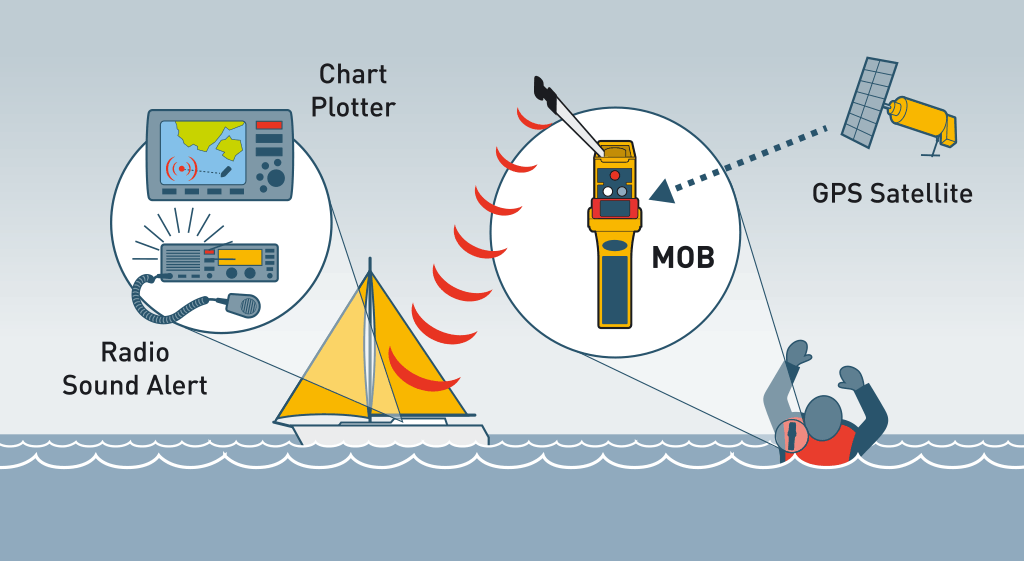A man overboard (MOB) situation is something we hope will never happen. But if it should, are you and your crew prepared? Alistair Hackett, Managing Director at Ocean Safety, offers his advice on the location and retrieval of a MOB.
Being able to retrieve a person from the water as quickly as possible is paramount as the risk of hypothermia, water ingestion and ultimately death increases with time spent in the water.
Lifejacket design has come a long way over the last few years. The modern designs are easy to don and hardly noticeable, so there’s no excuse not to wear one! But as with all safety equipment, don’t forget to store them correctly and get them checked regularly to ensure they’re always ready to auto-inflate when needed. It is always advisable that during tricky manoeuvres, when experiencing rough weather and when sailing at night, that you are tethered to the vessel.
Personal Locator Beacons (PLBs)
Once in the water, it’s essential that you can be located by those onboard. Personal locator beacons (PLB), used by many offshore sailors, are becoming popular with recreational sailors too.
Usually fitted to a lifejacket, there are several personal locator beacons on the market, but they mostly work with two alert systems, AIS or satellite link. For example, the Ocean Signal RescueME MOB1 is an AIS beacon while the Ocean Signal RescueMe PLB1 sends an alert to a satellite system operated by COSPAS SARSAT. If you fall overboard with an MOB1 it’ll send an alert to the AIS receiver onboard your boat so the crew can track your position while recovery is underway – it’s worth remembering that in most cases the vessel that rescues an MOB is normally the vessel the person fell off!
A PLB1, however, transmits your position and ID to a Rescue Coordination Centre via a satellite link operated and paid for by an international agreement. Choosing which to carry is a matter of preference or can be dictated by the race rules.
An inshore racing yacht with a team of strong sailors can swiftly haul a crew member back on board in good conditions, but it’s not so easy for a doubled-handed cruising boat out of sight of land, especially if it’s the stronger and more experienced of the two that has fallen overboard.
The Ocean Safety Jon Buoy Recovery Module makes retrieving a person from the water easy, especially if the MOB is injured. Mounted discreetly on the transom in a slimline canister, the Jon Buoy deploys into a high visibility float which the MOB can rest on, and which can be winched back on board via a halyard.
A horseshoe lifebuoy, or the automatically inflating, Jon Buoy version, can be thrown to a MOB and used in conjunction with a boarding ladder to get them back on board. Alternatively, the Ocean Safety MOB Ladder is designed for simple self-recovery in a MOB situation and can be deployed from the water to allow a MOB to re-board unaided.
For a comprehensive range of man overboard equipment or for more information visit oceansafety.com

